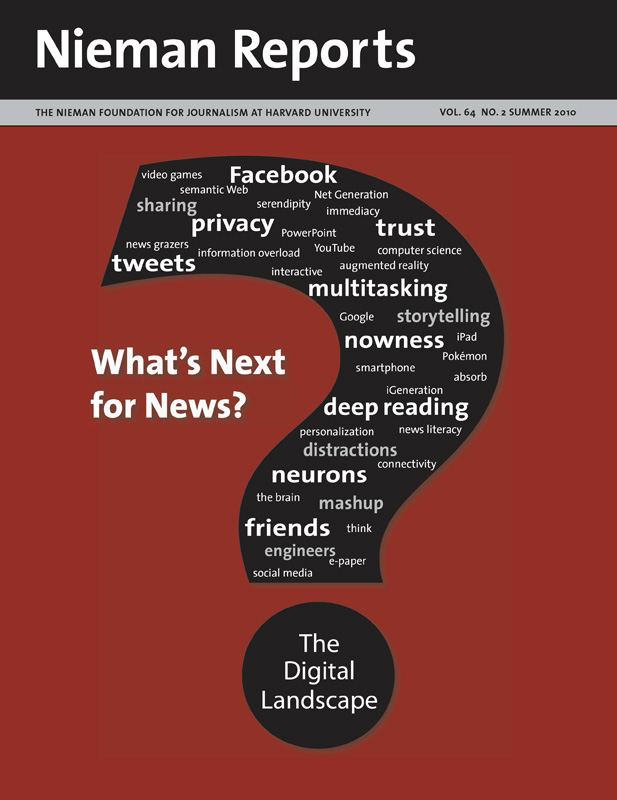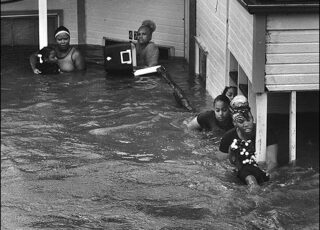ISSUE
Summer 2010

The Digital Landscape: What's Next for News?
Explore the emerging realms of digital territory where news and information reside—or will soon. It’s a place where game playing thrives and augmented reality tugs at possibilities. It’s where video excels, while the appetite for long-form text and the experience of “deep reading” is diminished, and it’s where the allure of multitasking greets the crush of information. Learn how young people negotiate their journey, and travel inside the brain to discover its capacities in the digital realm. Dig deeper into topics covered in the magazine by clicking on the books in our digital library to reveal selected videos, articles, blogs and Web sites.
